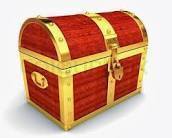Tuvalu

Basic Data:
-
Country ISO Code: TV
-
Official Language: Tuvaluan (primary), English (also official)
-
Language ISO Code: tvl (Tuvaluan), en (English)
-
Current Official Currency: Tuvaluan dollar (coins) circulating alongside Australian dollar (banknotes)
-
Current Currency ISO Code: AUD (Australian dollar, official banknotes); TVD (Tuvaluan dollar, unofficial code for coins)
Complete Financial History of Tuvalu:
Coins and Banknotes:
-
Prior to 1966, Tuvalu used the British pound sterling and colonial coins from the Gilbert and Ellice Islands.
-
From 1966 to 1976, Tuvalu officially used the Australian dollar (AUD) exclusively.
-
In 1976, Tuvalu began issuing its own coins, known as the Tuvaluan dollar (TVD), which circulate alongside Australian coins.
-
Tuvalu has never issued its own banknotes; Australian banknotes serve as the official paper currency.
Details of Tuvaluan Coins:
-
ISO Code: TVD (unofficial)
-
Designs/Symbols: feature Queen Elizabeth II’s profile (Arnold Machin design until 1985; Raphael Maklouf design in 1994), local fauna and flora, and cultural symbols of Tuvalu.
-
Singular name: Tuvaluan dollar
-
Plural name: Tuvaluan dollars
-
Subdivision: 1 dollar = 100 cents
-
Fraction singular: cent
-
Fraction plural: cents
-
Initial production date: 1976
-
Final production date: 1994 (after which no new Tuvaluan coins were minted; Australian coins used thereafter)
-
Initial circulation date: 1976
-
Final circulation date: Tuvaluan coins remain legal tender but are less commonly used than Australian coins
-
Mint: Perth Mint, Australia
-
Issuing authority: Government of Tuvalu (no central bank)
-
Coin denominations minted: 1, 2, 5, 10, 20, 50 cents; 1 dollar
-
Banknote denominations issued: none by Tuvalu; Australian banknotes of 5, 10, 20, 50, and 100 dollars are used
Economic Historical Context:
-
Tuvalu is a small island nation without a central bank; its currency system is closely tied to the Australian dollar with a fixed parity.
-
Coin issuance began in 1976 as a symbol of national identity shortly before independence in 1978.
-
Coin production ceased in 1994 due to costs and preference for Australian coins, which are more practical and widely accepted.
-
Tuvaluan coins remain legal tender but are less frequently used in daily transactions compared to Australian coins.
-
The economy relies heavily on remittances, fishing, foreign aid, and revenue from issuing commemorative coins to collectors.
Minting Locations:
-
Perth Mint, Australia
Designs and Symbols on Coins and Banknotes:
-
Queen Elizabeth II’s portrait (Arnold Machin design until 1985; Raphael Maklouf design in 1994)
-
Cultural and natural motifs including local marine life and traditional symbols
Production Quantities / Honorees / Seals:
-
1994 coins were produced in limited quantities and are now valued by collectors
-
Commemorative silver and gold coins were issued in 1976 and subsequently
Curiosities / Commemorative Coins:
-
1976 saw the release of silver and gold collector coins, including a 5-dollar silver and 50-dollar gold coin
-
Commemorative coins continue to be a source of government revenue
Current Circulation Status:
-
Tuvaluan coins remain legal tender but are less commonly used; Australian coins dominate circulation
-
Australian banknotes are the official paper currency
Issuing Authority:
-
Government of Tuvalu, with monetary functions managed by the National Bank of Tuvalu
Relevant Monetary Legislation:
-
No central bank; monetary policy is informal and based on agreements with Australia
Signatories on Banknotes:
-
Not applicable (no banknotes issued by Tuvalu)
Persons Honored on Coins and Banknotes:
-
Queen Elizabeth II (featured on coins)
Summary of Coins and Banknotes in Circulation:
| Type | Denominations in Circulation |
|---|---|
| Coins | 1, 2, 5, 10, 20, 50 cents; 1 Tuvaluan dollar |
| Banknotes | Australian banknotes of 5, 10, 20, 50, 100 dollars |
This report provides a comprehensive overview of Tuvalu’s financial history, highlighting the coexistence of the Tuvaluan dollar (coins) with the Australian dollar (banknotes), the coin production starting in 1976, and the economic and cultural context of the officially circulating currency.
 Nilton Romani
Nilton Romani
